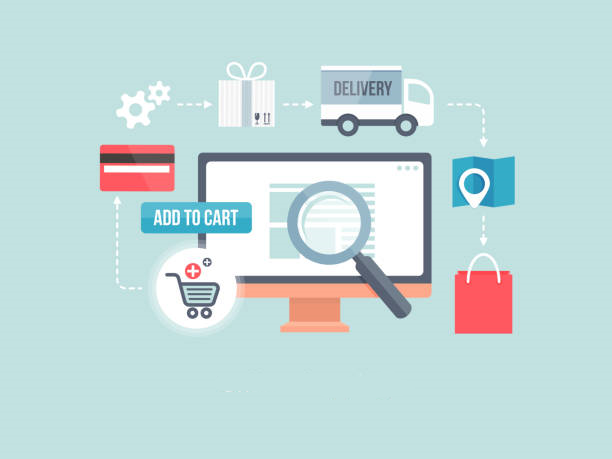Keeping Payments Inside Your Marketplace

The age-old problem every marketplace owner laments is keeping payments inside your marketplace. Building a profitable online marketplace requires the right payment structure to form the foundation of how your platform functions. There is no standard payment structure for marketplaces, but the most valuable model is one where the marketplace owner owns the entire purchasing process and charges a commission from each transaction. Being a part of the payment flow makes it much easier to generate a reasonable return on the value your platform creates.
On the other side, you must also create value for your users to ensure they don’t try to circumvent your payment system to avoid your fees, also known as “platform leakage”. A transaction involves two users: the seller and the buyer, so you must consider how to incentivize and provide value for both parties.
In this article, we’ll outline the most common strategies on how to provide value to your buyers and sellers to ensure they don’t bypass your marketplace payment system.
Offer a Layer of Security
Marketplaces naturally act as the middleman between buyers and sellers, so it’s important that users feel secure when purchasing items or services on your site. For rental style marketplaces, it’s common for people to feel hesitant to rent out their items or space to strangers. How can the renter be sure that the person renting their item or space won’t steal it or trash it?
One way to ease a rental provider’s mind is by requiring the renter to pay an upfront deposit fee. If the item or space is not damaged upon being returned, the deposit amount is returned to the renter. The deposit fee can be justified as “insurance” to the person renting the item or space, which will put their mind at ease knowing that if any unforeseen issues or damages occur, they’ll be covered. You can also structure deposits as first installments towards the final payment once the rental has been returned or completed.
Another way you can ensure security for your buyers is by implementing a verification feature. This would require anyone who wants to sell their items, sell their service, or list their rental listings on your marketplace to be verified by you, the marketplace owner before they are visible as sellers on your marketplace. Once they are verified, the seller will have a checkmark next to their name on their profile. You may require specific documents or certifications from your sellers in order to verify them. There are many ways to customize this verification feature to fit your specific marketplace. It adds that extra layer of security for your buyers to know that the products they’re purchasing, or the service providers they’re hiring, or the rental provider they’re renting from have been evaluated by you.
Review Systems for Marketplace Payments
The value of a five-star review goes a long way for any business, especially in today’s world where technology has made it easy for anyone to post their opinions. What do you do when you’re in a new city and want to find the best burger in town? You most likely get on Yelp and base your decision on which place has the best reviews or most stars.
Allowing buyers to rate and review sellers on your marketplace not only incentivizes them to provide quality products or services but also helps them build a reputation. The more positive reviews the seller receives on your marketplace, the more likely they are to gain repeat customers as well as new ones. This allows them to profit from selling on your marketplace, which in turn also benefits you as the marketplace owner and keeps marketplace payments flowing.
You can offer verified reviews for your service or product providers so that after a service is rendered or an item has been shipped, the buyer is sent a link to review the provider. Unlike open reviews, verified reviews only allow users who have received a service or product from the provider to review them, meaning the buyer must have purchased the item from your marketplace.
Provide Workflow Tools
How great does it feel when you find an app, website, or hack that makes your life easier? You can create that same satisfaction and convenience for your sellers by providing workflow tools in your marketplace that allows them to do their jobs more effectively.
In service marketplaces like pet sitting, fitness training, or skilled labor, service providers are typically booked on a recurring basis once they gain the customer’s trust. A common situation that occurs once that trust is earned, is the service provider will offer their customers cheaper prices if they pay them directly or through other channels outside of your marketplace so they don’t have to factor in the marketplace commission. Recurring transactions are more valuable than one-and-done transactions, especially for service and rental marketplace platforms. There must be an incentive or value for the service provider to deter them from conducting their business outside of your marketplace.
One strategy is to act as a SaaS (Software as a Service) for your providers. Your marketplace not only connects customers and providers but will also help your providers manage their businesses within your platform. For providers who work off a schedule, like babysitters, rental providers, fitness trainers, you can help them manage their availability with a calendar booking feature. Customers would be able to see the provider’s availability and book their services right on your marketplace.
Communication Channels for Marketplace Payments
Marketplaces have the power to create a collaborative economic community, but without the proper channels of communication, it makes it difficult for buyers and sellers to connect. Most marketplaces have a messaging system allowing buyers and sellers to communicate within the marketplace. There are strategies you can implement within your messaging system that might discourage people from going around your payment system.
One approach is by providing a matching system that automatically matches buyers in search of a particular item or service, with sellers who have that item or service for sale. For example, let’s say I’m a buyer on an Etsy-style marketplace, and I’m in search of a handmade leather wallet. I would create a post of what I’m looking for and the matching system will automatically match me up with all sellers that sell handmade leather wallets on the marketplace. Those sellers will also see that they match with my post and can directly apply to it to communicate with me and begin the transaction process. Matching systems are a win-win for both buyers and sellers in your marketplace.
Another method that makes it difficult for users to bypass marketplace payments is to make it harder for people to exchange contact information before a transaction takes place. You can do this by removing contact details, like emails and phone numbers, from private messages between users. Removing the ability for users to send private messages before a transaction is made is another strategy. You can also release contact information only after a transaction has been made. Presenting this to your users as a motive to protect their personal information will make them feel safe, which is an added plus!






